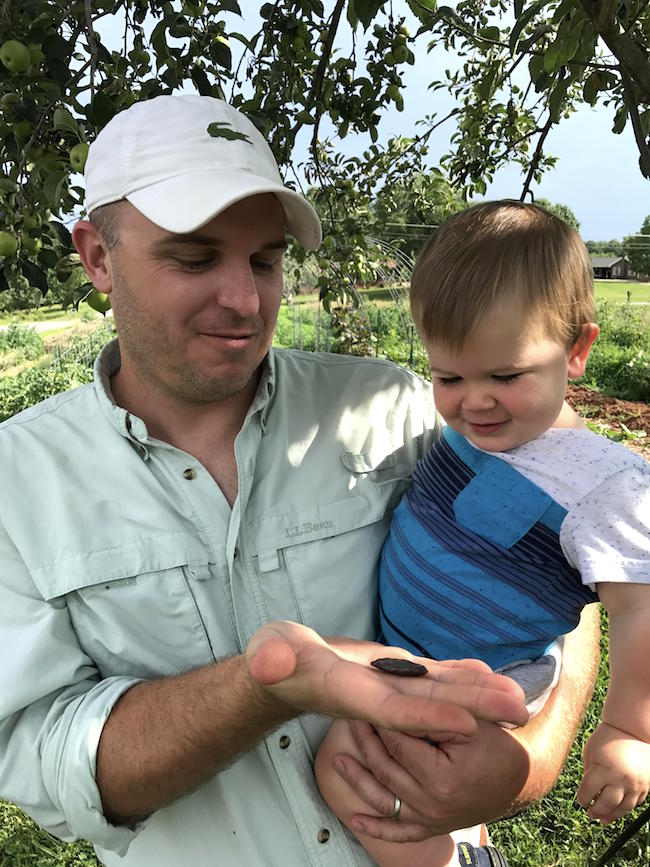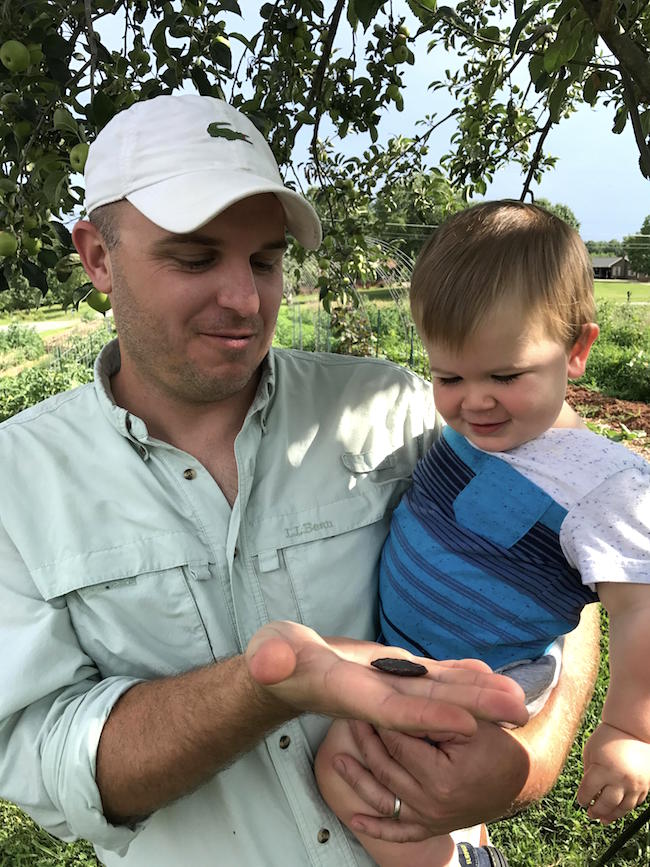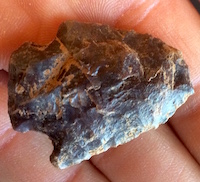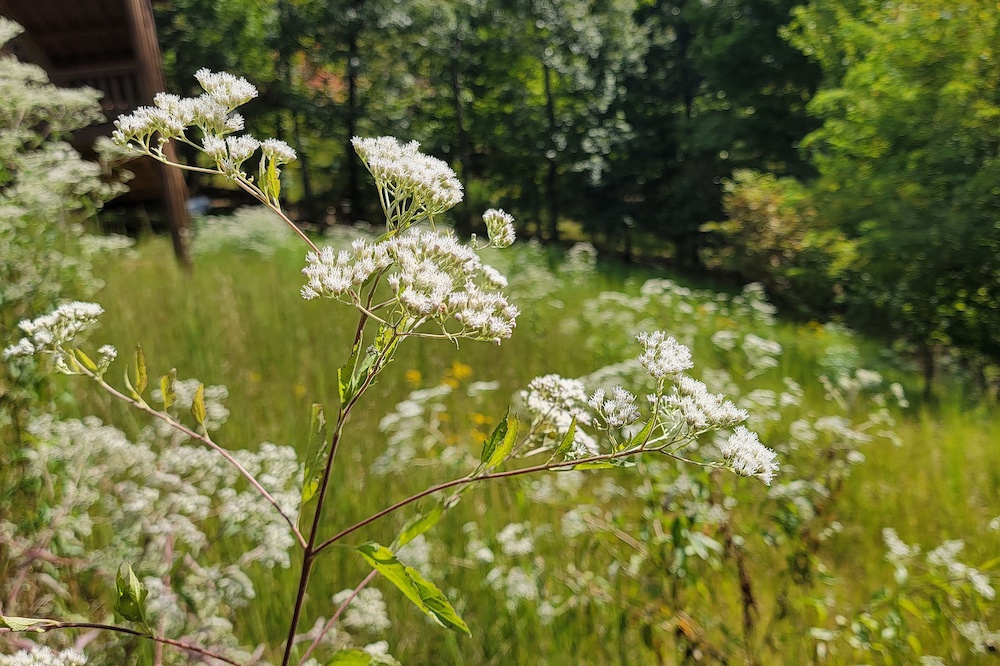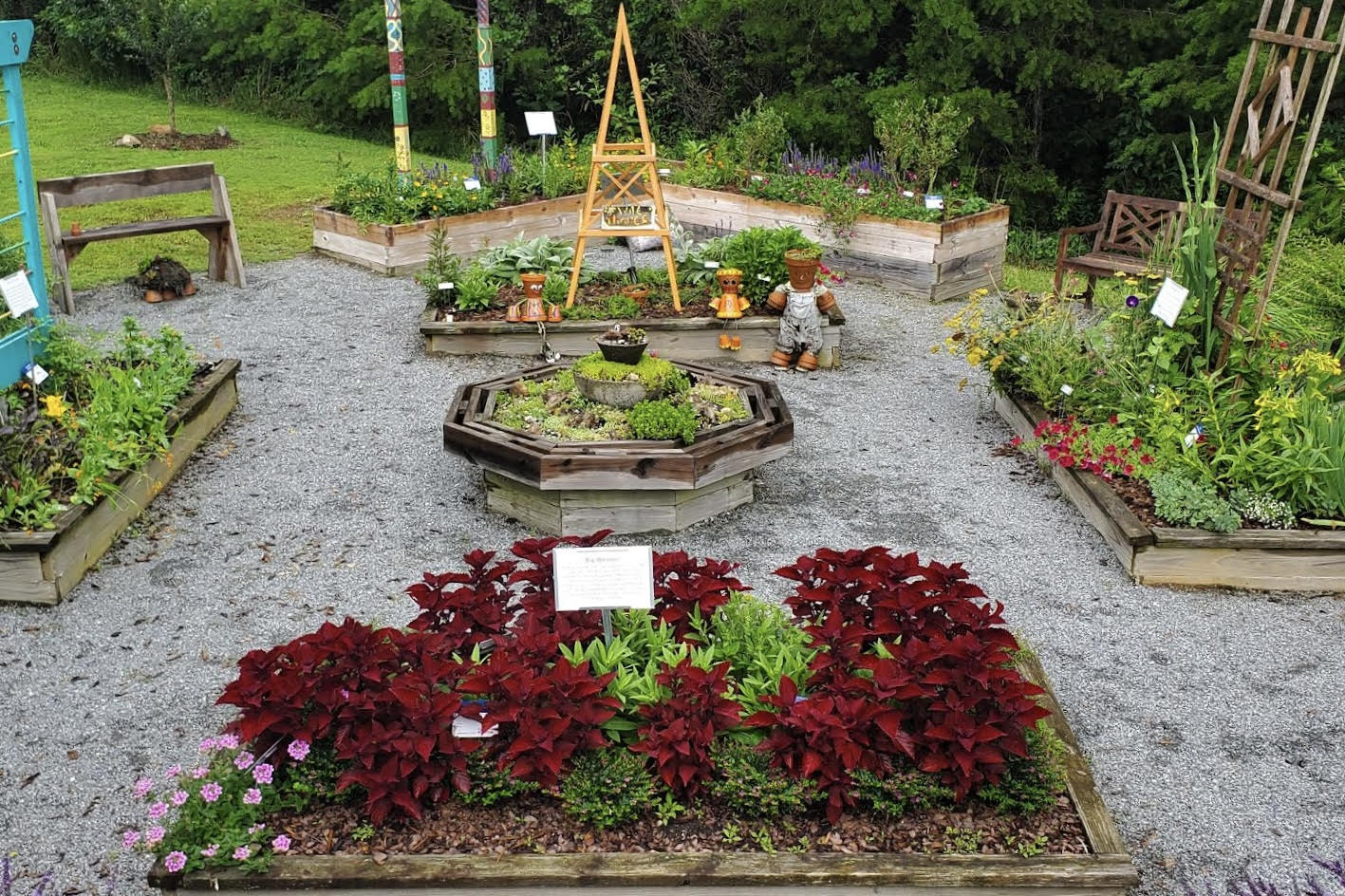As a youngster, I was fascinated with the idea of becoming an archaeologist. I could not imagine a more romantic profession than the study of ancient cultures and sites. To practice finding clues at ancient sites, I would routinely bury my coin collection in plastic bags, make maps, then get my metal detector out and dig them up months later. I was not Indiana Jones, but I never lost my appreciation and sense of wonder about the people and animals that inhabited the Earth before I did.
Last spring, my wife and I were expecting the arrival of our first child, Graham. My mind was continually preoccupied with what kind of parent I would be, what type of personality and interests Graham would have, and how that would influence his life into adolescence and, eventually, adulthood.
Just a few weeks after Graham was born, I was taking a midday stroll in my freshly tilled garden. I jokingly refer to my garden as a “prehistoric parking lot," given the never-ending supply of jagged granite stones I find. On this particular day, I was walking just after a rain, which is prime rock-harvesting time. My stroll, however, yielded more than handfuls of brown granite. Typically I only bend down to pick up bigger rocks found by my hoe or tiller, but at the end of one row, a small rock caught my eye through the rain-soaked soil.
I reached for the burgundy-hued rock and was surprised to find an arrowhead about the size of a 50-cent piece. In the hours after my find, I wondered about this ancient tool and the person who crafted it. What kind of life did the person have? Was my garden the site of his or her hunting grounds, or perhaps where he or she brought game back to feed a family? Did this arrowhead yield successful nourishment?
After finding the arrowhead, I was reminded of an oddly shaped stone that I found some months prior while planting muscadines. This particular stone was almost perfectly round, about 8 inches in diameter and no more than 2 inches thick at its widest point in the center. When I initially dug it up, I thought it was different and put it to the side, but never thought that it had some history and purpose to it. After finding the arrowhead, I suspected that this too might have been some tool used by people who lived on my 2 acres long before I did.
Not knowing much about Native American relics, I sent some pictures off to Ervan Garrison of the University of Georgia’s Department of Anthropology. He reported back that what I thought was an arrowhead was much older than bow-and-arrow technology, and was in fact made a few thousand years before that technology. He explained that it was likely used with a spear-thrower or atlatl. He described the object as a corner-notch spear point from the Middle Archaic Period (5000-3000 B.C.).
The round stone was not as easy to identify. Garrison did say that it appeared to be a grinding or polishing stone. A stone like this was likely used by a woman during food preparation or other daily tasks, he said.
I was astounded and humbled to find these pieces of ancient history while performing the trivial task of picking up rocks in my garden. Finding these treasures has given me a greater connection to my garden and the early history of north Georgia. When Graham gets older, I plan to hide the point in the garden so that he can experience the thrill of discovering such a piece of history. I hope it will inspire him to value human history and the natural world and, selfishly, make him excited to pick up rocks in his dad’s garden.
For help in identifying items, contact the UGA Laboratory of Archaeology at (706) 542-9234.

